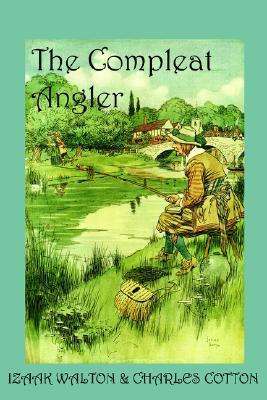Chapter XIX — The Compleat Angler
byChapter XIX – The Compleat Angler presents a thoughtful survey of England’s rivers, blending admiration for their beauty with appreciation of their cultural, economic, and ecological significance. Piscator draws on the works of Dr. Heylin and other learned sources to offer not just a list of waterways but a tribute to their place in English life. He begins with the Thames, a river of grandeur, tracing its course from its dual origin at the Thame and Isis to where it empties into the sea. The Thames is praised for its majestic course past noble estates, thriving towns, and ancient sites. Its influence extends beyond scenery, nourishing trade, industry, and national pride. This river becomes symbolic not only of movement and life but also of history and civilization. England’s rivers are more than waterways—they are lifelines connecting people, places, and purpose.
Piscator next recounts the story of the Severn, known in Roman times as Sabrina, which springs from the Welsh mountains and cuts through fertile regions until it meets the sea near Bristol. Along its journey, it flows by key towns and contributes to shaping the land. It is recognized not just for its length but for the identity it lends to those who live along its banks. The Severn stands as a river of both beauty and consequence, uniting natural grace with human reliance. The Trent follows in this list with equal reverence. Though not as long as the Severn, the Trent is unique for hosting thirty kinds of fish and absorbing thirty tributaries before it joins the Humber. It flows as both a natural wonder and a resource-rich channel.
From there, Piscator names the Medway, the Tweed, and the Tyne, each with its unique claim to fame. The Medway supports naval strength, sheltering ships and sailors for generations. The Tweed defines the borderlands of England and Scotland, while the Tyne is famous not only for its flowing waters but also for powering Newcastle’s industry through its coal-bearing vessels. These rivers, though differing in size and fame, all contribute to the rhythm of England’s life. Their courses are shaped by nature, but their significance is forged by history and human endeavor. Each river, whether meandering gently or rushing with purpose, becomes a thread in the broader tapestry of the nation.
Piscator further elevates this reverence with a literary flourish, quoting Michael Drayton’s sonnets. These verses celebrate the rivers as more than physical features; they are spiritual guardians of the land, each with a voice, a tale, and a pride of place. The poetry gives breath to the rivers’ personalities, portraying them as actors in England’s enduring drama. With each verse, Drayton captures the vitality, memory, and movement that these rivers carry. Through this lens, Piscator encourages readers to view rivers not merely as fishermen’s haunts but as storied companions. They serve as muses for poets and sanctuaries for seekers of solitude.
Beyond geography and poetry, Piscator includes a moment of curiosity from Dr. Wharton, who once dissected a rare fish caught from one of these rivers. The account reveals not only biological fascination but the richness of discovery that angling can offer. This reflection reminds readers that rivers are also mysterious realms, holding life forms not yet fully understood. Fishing, then, becomes more than recreation—it becomes exploration. The story also reinforces the blend of practical skill and intellectual inquiry that defines the angler’s pursuit. With every cast, there’s potential for delight, surprise, or even scientific revelation.
As this chapter closes, the reader is left with a deeper appreciation for the rivers of England—not just as scenic routes or fishing grounds, but as dynamic elements of a nation’s identity. Piscator’s survey blends practical knowledge, poetic imagery, and historical insight. Through his eyes, rivers are immortalized as both a reflection of nature’s abundance and a canvas upon which human history continues to unfold. Each stream, no matter how small, contributes to a larger story—of people, purpose, and the eternal flow of life. In this way, Chapter XIX not only maps rivers but charts the deep current of connection between man and the natural world.


